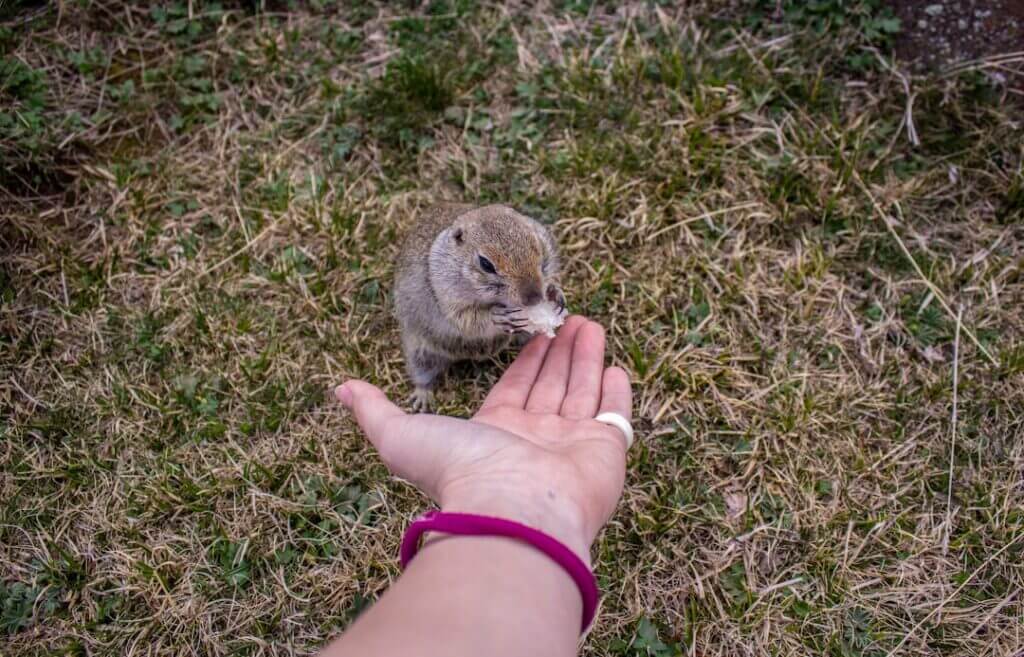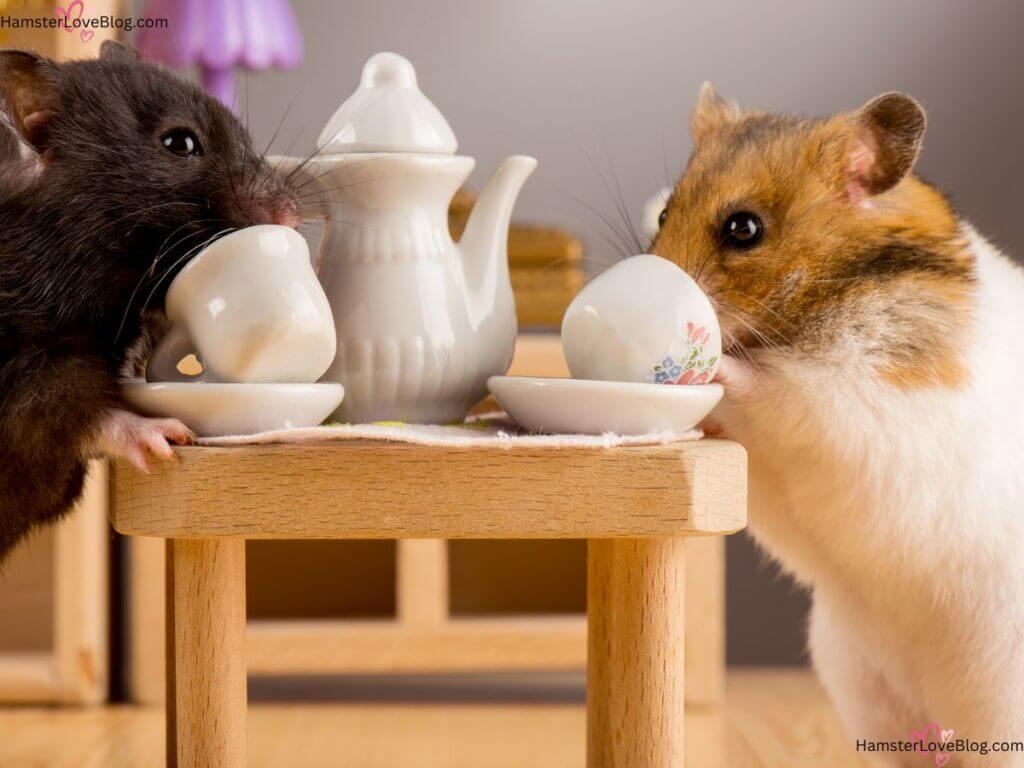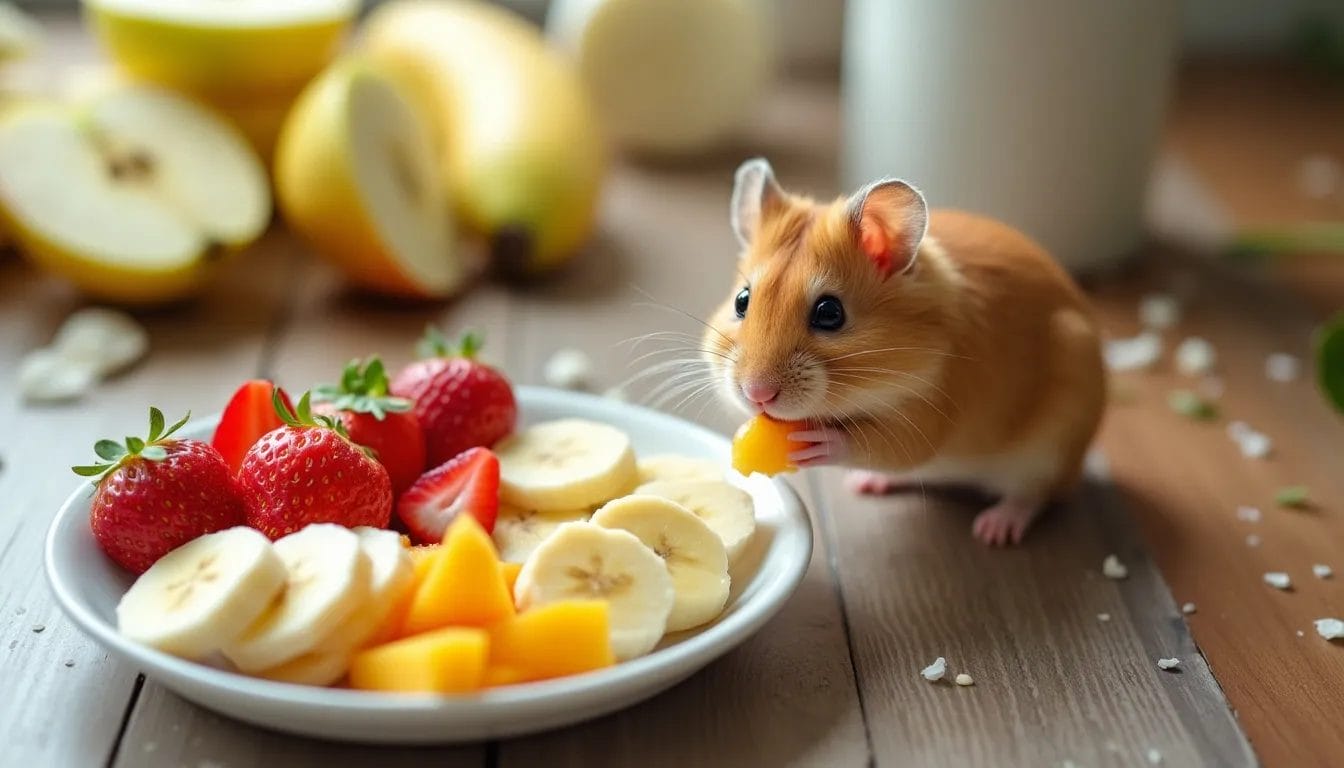
- Choose the right hamster breed for your lifestyle and preferences.
- Set up a comfortable and safe habitat for your hamster to thrive in.
- Provide a balanced and nutritious diet to keep your hamster healthy.
- Establish a routine for playtime, exercise, and cleaning to maintain your hamster’s well-being.
- Handle and interact with your hamster gently and regularly to build trust and bond with your pet.
Choosing the Right Hamster Breed
Hamsters come in a variety of breeds, each with its own unique characteristics and care requirements. As a first-time hamster owner, it’s essential to understand the different types of hamsters and the factors to consider when selecting the right one for your lifestyle.
Hamsters belong to the Cricetidae family and are small, furry rodents known for their cheek pouches, which they use to store food. The most common breeds include the Syrian (or Golden) hamster, the Roborovski Dwarf hamster, the Campbell’s Dwarf hamster, and the Chinese hamster. Each breed has distinct physical features, temperaments, and care needs, so it’s crucial to research and choose the one that best fits your preferences and living situation.
When selecting a hamster breed, consider factors such as the size of your living space, your level of experience with small pets, and your personal preferences regarding the hamster’s size, activity level, and social needs. For example, Syrian hamsters are larger and generally more solitary, while Dwarf hamsters are smaller and can be kept in pairs or small groups. Understanding these differences will help you make an informed decision and ensure that you provide the best possible care for your new furry friend.
Setting Up the Perfect Hamster Habitat

Creating a comfortable and secure habitat is crucial for the well-being of your hamster. Choosing the right cage size and type of cage you choose can significantly impact your hamster’s physical and mental health. So it’s essential to select the right enclosure, setting up a suitable bedding and furnish it with appropriate accessories and providing chew toys.
When it comes to the cage, bigger is always better for a hamster. Experts recommend a minimum cage size of 24 inches by 12 inches, with a height of at least 12 inches. This provides ample space for your hamster to burrow, run, and explore and avoiding overcrowding in the cage. The cage should be made of sturdy, chew-proof materials, such as glass, plastic, or metal, to prevent your hamster from escaping or causing damage.
Furnishing the habitat is just as important as the cage itself. Provide a generous layer of high-quality bedding, such as aspen shavings or paper-based litter, to allow your hamster to burrow and nest. Include a variety of toys, such as exercise wheels, tunnels, and chew toys, to stimulate your hamster’s natural behaviors and prevent boredom. Additionally, ensure that the habitat includes a suitable hiding spot, such as a small, enclosed house or a cardboard box, where your hamster can retreat and feel secure.
Maintaining a clean and well-organized habitat is crucial for your hamster’s health and well-being. Regularly cleaning the cage to remove soiled bedding and uneaten food, and perform a full cage cleaning at least once a week. By creating a comfortable and enriching environment, you’ll help your hamster thrive and enjoy a happy, healthy life.
Providing a Nutritious Diet for Your Hamster
Proper nutrition is essential for the overall health and well-being of your hamster. Hamsters are omnivores, meaning they require a balanced diet that includes a variety of high-quality foods to meet their nutritional needs.
The foundation of a hamster’s diet should be a high-quality, commercially-prepared hamster food, which typically contains a mix of grains, seeds, and proteins. These formulated diets are designed to provide your hamster with the necessary vitamins, minerals, and nutrients. Supplement this staple diet with fresh fruits and vegetables, such as carrots, apples, and leafy greens, which can provide additional nutrients and variety.
It’s important to avoid feeding your hamster too many sugary or fatty treats, as these can lead to health issues like obesity and diabetes. Instead, offer small amounts of healthy snacks, such as unsalted nuts, cooked whole grains, or plain, unsweetened yogurt, as occasional treats.
Ensure that your hamster always has access to clean, fresh water, either in a sipper bottle or a shallow dish. Monitor your hamster’s water intake and providing fresh water daily to maintain proper hydration.
By providing a balanced and nutritious diet, you’ll support your hamster’s overall health, promote a shiny coat, and encourage natural behaviors like hoarding and burrowing. Consult with your veterinarian or a small animal specialist to ensure you’re meeting your hamster’s specific dietary requirements.
Establishing a Healthy Routine for Your Hamster
Maintaining a consistent and healthy routine is crucial for your hamster’s well-being. This includes giving your hamster enough exercise, as well as incorporating regular playtime and socialization into your hamster’s daily life.
Hamsters are typically most active during the evening and nighttime hours, so it’s best to schedule their feedings and playtime accordingly. Provide your hamster with a consistent feeding schedule, offering a measured amount of food at the same time each day. This not only ensures your hamster receives the proper nutrition but also helps establish a sense of routine and security.
In addition to a consistent feeding schedule, it’s important to incorporate regular exercise and playtime into your hamster’s daily routine. Hamsters are natural burrowers and need ample space to run, climb, and explore. Provide your hamster with an exercise wheel or allow supervised playtime outside of its habitat, ensuring the area is safe and free of potential hazards.
Socialization is another crucial aspect of your hamster’s well-being. While hamsters are generally solitary animals, they can benefit from positive interactions with their human caretakers. Set aside time each day to handle your hamster gently, offer treats by hand, and engage in supervised playtime. This not only helps build trust and a strong bond but also contributes to your hamster’s overall mental and emotional health.
By establishing a consistent and healthy routine, you’ll help your hamster feel secure, content, and able to thrive in your care. Remember to be patient and consistent, as it may take time for your hamster to become accustomed to its new environment and routine.
Handling and Interacting with Your Hamster

Handling your hamster properly and positive interactions are essential for building a strong bond with your hamster and ensuring its well-being. Hamsters can be delicate and easily startled, so it’s crucial to learn the right techniques for safely picking up and holding your furry friend.
When handling your hamster, always approach it slowly and calmly, avoiding sudden loud noises or movement that may startle it. Gently scoop your hamster from underneath, supporting its entire body, and avoid grabbing it by the scruff of the neck or tail. Once you have a secure hold, keep your hamster close to your body and avoid letting it jump or fall.
Encourage positive interactions by offering your hamster treats by hand and engaging in supervised playtime outside of its habitat. This not only helps build trust but also allows your hamster to explore its environment and engage in natural behaviors, such as burrowing and climbing. Remember to always supervise your hamster during playtime and ensure the area is free of potential hazards.
As your hamster becomes more comfortable with your presence, you can gradually increase the duration and frequency of your interactions. However, it’s important to respect your hamster’s need for personal space and avoid overwhelming it with too much handling or attention. By taking a patient and gentle approach, you’ll help your hamster feel secure and develop a positive association with you and its environment.
Proper handling and positive interactions are essential for your hamster’s overall well-being and the development of a strong bond between you and your furry companion.
Grooming and Hygiene for Your Hamster
Maintaining your hamster’s grooming and hygiene is crucial for its health and well-being. Hamsters are generally clean animals, but they do require regular attention to their coat, nails, and living environment to ensure they remain healthy and comfortable.
Grooming your hamster’s coat is a relatively simple task, but it’s important to do it regularly. Use a soft-bristle brush or a damp cloth to gently remove any loose hair or debris from your hamster’s fur. Be careful not to over-groom, as this can lead to skin irritation or excessive shedding.
Trimming your hamster’s nails is another essential grooming task. Long nails can become uncomfortable and even lead to health issues, such as difficulty walking or scratching. Use a small pair of nail clippers designed for small animals and carefully trim the tips of your hamster’s nails, being cautious not to cut too close to the quick (the blood vessel inside the nail).
In addition to grooming, keeping your hamster’s habitat clean and odor-free is crucial for its overall health and well-being. Spot-clean the cage daily by removing soiled bedding and uneaten food, and perform a full cage cleaning at least once a week. Use a mild, pet-safe cleaning solution and thoroughly disinfect the habitat to prevent the buildup of bacteria and odors.
By maintaining your hamster’s grooming and hygiene, you’ll help prevent the development of skin problems, infections, and other health issues. Remember to approach these tasks gently and with patience, as your hamster may initially be hesitant or uncomfortable with the process. Consistent and positive reinforcement can go a long way in making grooming a stress-free experience for both you and your furry friend.
Recognizing and Addressing Common Hamster Health Issues
Hamsters, like any other pets, can be susceptible to various health issues. As a responsible pet owner, it’s essential to be aware of the common health problems that can affect your hamster and to take proactive steps to prevent and address them.
One of the most common health concerns in hamsters is respiratory infections, which can be caused by poor air quality, stress, or underlying medical conditions. Signs of respiratory distress include sneezing, wheezing, and labored breathing. If you notice these symptoms, it’s crucial to seek veterinary care promptly, as respiratory issues can quickly become life-threatening if left untreated.
Another common health issue in hamsters is skin problems, such as mites, fungal infections, or dry, flaky skin. These conditions can cause itching, hair loss, and discomfort for your hamster. Maintaining a clean and well-ventilated habitat, as well as providing a balanced diet, can help prevent many skin-related problems. If you notice any skin irritation or changes in your hamster’s coat, consult with a veterinarian for proper diagnosis and treatment.
Dental issues, such as overgrown or misaligned teeth, can also be a concern for hamsters. These problems can make it difficult for your hamster to eat and may lead to other health complications. Providing your hamster with appropriate chew toys and a diet rich in fibrous foods can help prevent dental problems, but regular veterinary check-ups are essential for early detection and treatment.
By understanding hamster behavior and monitoring your hamster’s health, you can help prevent or quickly address any potential issues that may arise. If you notice any changes in your hamster’s behavior, appetite, or physical appearance, don’t hesitate consulting a veterinarian for any concerns. With proper care and attention, you can help ensure your hamster enjoys a long, healthy, and happy life.
Hamster-Proofing Your Home for Safety

Ensuring the safety of your hamster in your home is a crucial aspect of responsible pet ownership. Hamsters are curious and adventurous creatures, and they can easily find themselves in dangerous situations if their environment is not properly hamster-proofed.
One of the primary concerns when it comes to hamster-proofing is preventing your furry friend from escaping its habitat. Hamsters are excellent climbers and can squeeze through surprisingly small spaces, so it’s essential to secure the cage with a tight-fitting lid or cover. Additionally, ensure that any openings or gaps in the cage are small enough to prevent your hamster from squeezing through.
Beyond the cage, it’s important to identify and address potential hazards throughout your home. Hamsters are curious and may chew on electrical cords, furniture, or other household items, which can pose a serious risk of injury or fire. Carefully inspect your home and take steps to protect your hamster, such as covering or hiding cords, keeping household cleaners and medications out of reach, and providing plenty of safe chew toys to satisfy your hamster’s natural urge to gnaw.
When your hamster is out of its habitat for playtime or exploration, be vigilant and supervise its activities closely. Ensure that the area is free of any small spaces or openings where your hamster could become trapped or escape, and remove any potential hazards, such as open toilets or uncovered trash cans.
By taking the time to thoroughly hamster-proof your home, you’ll create a safe and secure environment for your furry companion to thrive. Remember, prevention is key when it comes to ensuring your hamster’s safety, so be proactive and stay vigilant in your efforts to protect your beloved pet.
Preparing for Your Hamster’s Long-Term Care
Owning a hamster is a long-term commitment, and it’s essential to be prepared for the various stages of your furry friend’s life. Understanding the typical lifespan of a hamster and planning for its future needs can help ensure your pet receives the best possible care throughout its lifetime.
Hamsters have a relatively short lifespan, with most living between 2 to 3 years, depending on the breed and individual factors. As your hamster ages, its care requirements may change, and it’s important to be prepared to adapt your approach accordingly.
As your hamster enters its senior years, you may need to make adjustments to its habitat, diet, and exercise routine to accommodate any age-related changes or health concerns. This may include providing a larger, more accessible cage, offering softer or easier-to-chew foods, and incorporating more gentle playtime activities.
It’s also essential to have a plan in place for your hamster’s future, should you be unable to continue caring for it. This may involve identifying a trusted friend or family member who can take over the responsibility or researching reputable small animal rescue organizations in your area.
By planning ahead and being proactive in your hamster’s care, you’ll ensure that your furry companion receives the best possible quality of life, even as its needs evolve over time. Remember, owning a hamster is a long-term commitment, and being prepared for the various stages of its life will help you provide the best possible care and support throughout your time together.
FAQs
What is a hamster?
A hamster is a small, furry rodent that is commonly kept as a pet. They are known for their round bodies, short tails, and adorable faces.
What are some common breeds of hamsters?
There are several common breeds of hamsters, including Syrian hamsters, dwarf hamsters, and Chinese hamsters.
What kind of habitat do hamsters need?
Hamsters need a cage that is large enough for them to move around in, with plenty of bedding material for them to burrow in. They also need a wheel for exercise, and toys and chew items to keep them entertained. It also also important keeping the cage away from drafts (cold wind).
What do hamsters eat?
Hamsters are omnivores and eat a variety of foods, including commercial hamster food, fresh fruits and vegetables, and occasional treats like seeds and nuts. Avoiding harmful foods like chocolate.
How often do hamsters need to be cleaned?
Hamsters should have their cages cleaned at least once a week, with bedding material changed and any soiled areas removed. Water bottles and food dishes should also be cleaned regularly.
Do hamsters need companions?
Syrian hamsters are solitary animals and should be kept alone, while dwarf hamsters can be kept in pairs or small groups. Chinese hamsters can also be kept in pairs, but may fight if introduced as adults.
What are some common health issues for hamsters?
Common health issues for hamsters include dental problems, respiratory infections, and wet tail, a bacterial infection that can be fatal if left untreated. Regular veterinary check-ups are important for keeping hamsters healthy.





